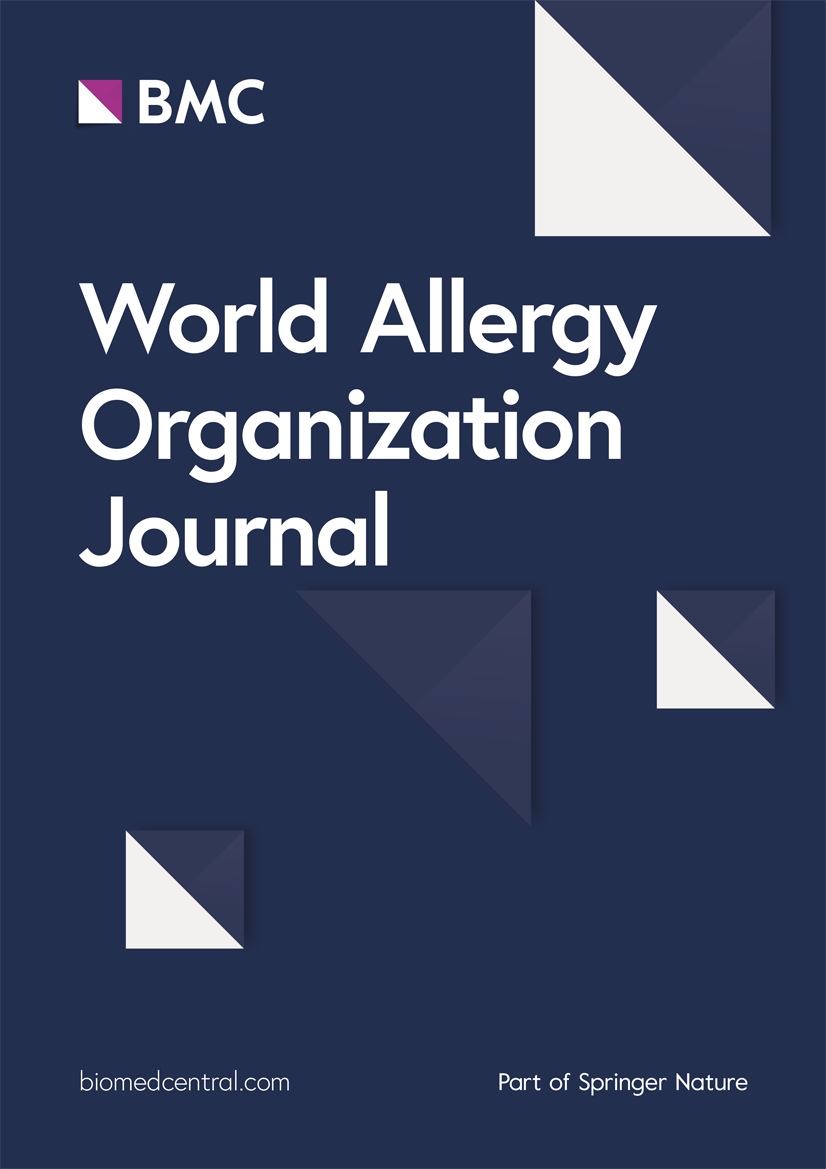青霉素主要和次要决定因素在疑似青霉素过敏皮肤试验中的作用
IF 4.3
2区 医学
Q2 ALLERGY
引用次数: 0
摘要
背景:在评估患者报告的青霉素过敏标签(PALs)时,皮肤试验对青霉素主要决定因素(即青霉酰聚赖氨酸(PPL))和次要决定因素混合物(MDM)的效用一直受到质疑。方法回顾2015年4月至2023年12月Austin Health (Melbourne, Australia)的临床抗生素过敏数据库。选择接受皮肤点刺试验(SPT)和皮内试验(IDT)的pal患者进行先前公布的标准化β -内酰胺面板。对PPL和/或MDM的SPT或IDT阳性患者进行鉴定。结果共纳入1316人。168/1316例(12.77%)皮肤试验阳性。1316例患者中PPL和/或MDM阳性26例(1.98%),其中PPL和/或MDM阳性6例,另外皮肤试验至少1种天然青霉素阳性20例。使用PPL和MDM确认额外1例青霉素过敏需要检测的次数计算为217.39。所有6例青霉素决定因子检测阳性的患者均报告出现立即超敏反应,其中4例出现过敏反应。结论这些结果表明,在皮肤试验中常规纳入PPL和MDM的结果有限,特别是在评估迟发性超敏反应时。限制其使用以选择人群,如过敏反应患者,可能证明更有效和更具成本效益。本文章由计算机程序翻译,如有差异,请以英文原文为准。
The role of penicillin major and minor determinants in skin testing for suspected penicillin hypersensitivity
Background
In the evaluation of patient-reported penicillin allergy labels (PALs), the utility of skin testing to the penicillin major determinant, known as penicilloyl polylysine (PPL), and to the minor determinant mixture (MDM), has been questioned.
Methods
A review of a clinical antibiotic allergy database from April 2015 to December 2023 at Austin Health (Melbourne, Australia) was performed. Patients with PALs who underwent skin prick testing (SPT) and intradermal testing (IDT) to a previously-published standardised beta-lactam panel were selected. Those with positive SPT or IDT to PPL and/or MDM were identified.
Results
A total of 1316 individuals were included in our analysis. Positive skin testing to any reagent was recorded for 168/1316 (12.77%). Positive results to PPL and/or MDM were recorded for 26/1316 (1.98%), including 6 with isolated positive results to PPL and/or MDM, and 20 with additional positive skin testing to at least 1 native penicillin. The number needed to test to confirm 1 additional penicillin allergy with the use of PPL and MDM was calculated at 217.39. Immediate hypersensitivities were reported by all 6 individuals testing positive to the penicillin determinants alone, including 4 with anaphylaxis.
Conclusion
These results suggest limited yield in the routine inclusion of PPL and MDM in skin testing panels, particularly in evaluating delayed hypersensitivities. Restricting their use to select cohorts, such as those with anaphylaxis, may prove more efficient and cost-effective.
求助全文
通过发布文献求助,成功后即可免费获取论文全文。
去求助
来源期刊

World Allergy Organization Journal
Immunology and Microbiology-Immunology
CiteScore
9.10
自引率
5.90%
发文量
91
审稿时长
9 weeks
期刊介绍:
The official pubication of the World Allergy Organization, the World Allergy Organization Journal (WAOjournal) publishes original mechanistic, translational, and clinical research on the topics of allergy, asthma, anaphylaxis, and clincial immunology, as well as reviews, guidelines, and position papers that contribute to the improvement of patient care. WAOjournal publishes research on the growth of allergy prevalence within the scope of single countries, country comparisons, and practical global issues and regulations, or threats to the allergy specialty. The Journal invites the submissions of all authors interested in publishing on current global problems in allergy, asthma, anaphylaxis, and immunology. Of particular interest are the immunological consequences of climate change and the subsequent systematic transformations in food habits and their consequences for the allergy/immunology discipline.
 求助内容:
求助内容: 应助结果提醒方式:
应助结果提醒方式:


